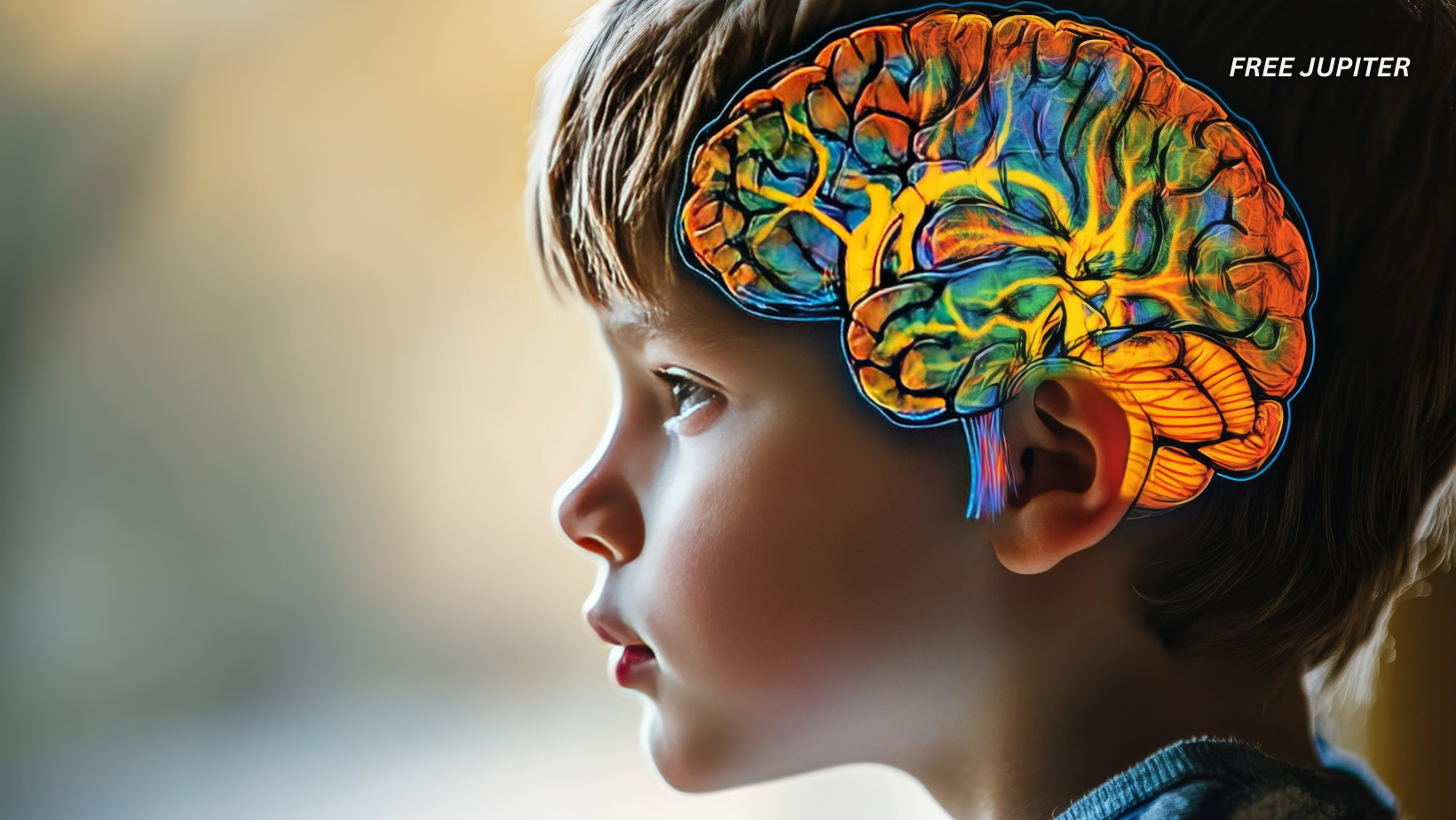New research is shedding light on how tough experiences during childhood can change the way the brain grows and works.
A large study involving over 7,000 children found that facing adversity—like family conflicts, illness, or moving to a new home—during late childhood seems to speed up the brain’s development, especially in how different brain regions connect with each other.
But this faster brain growth comes with a mixed bag of effects: it may help kids manage emotions better, reducing anxiety and sadness, yet it can also lead to poorer performance in school.
What Does “Accelerated Brain Development” Mean?
Our brains are made up of many networks that communicate constantly. Some parts, like the cortex, handle thinking and planning, while deeper areas, such as the amygdala and hippocampus, are involved in emotions and memory. Normally, these connections develop gradually as children grow.
The study found that kids who experienced stressful events had quicker changes—specifically, a decrease in the strength of connections between large brain networks and these deeper emotional centers. This suggests their brains might be maturing faster than usual, possibly as a way to adapt to stress.
Why Might the Brain Speed Up?
Scientists believe this accelerated development might be a survival mechanism. When children face hardship, their brains may adapt to help them better regulate emotions and cope with stress, which could explain why these kids showed fewer signs of internal struggles like anxiety or depression.
However, this adaptation might come at a cost. The same brain changes linked to better emotional coping were also tied to lower academic achievement and, in some cases, more behavioral challenges like acting out.
How Did Researchers Study This?
This study used data from the Adolescent Brain Cognitive Development (ABCD) Study, a massive, ongoing project tracking thousands of children’s brain and behavioral growth across the U.S. The researchers focused on 7,190 children who had brain scans at around age 10 and again two years later.
They looked at how the connections between different brain regions changed over time and compared these changes to reports of stressful life events the children experienced during that period.
To make sure their findings were solid, the researchers used advanced statistical methods to account for many other factors that could affect brain development, such as family income, genetics, and parental mental health.
They even used machine learning to predict how likely each child was to experience adversity, helping to isolate the specific effects of stress on the brain.
Read more: Aging Has Been Found To Occur In Three Stages: 34, 60, and 78, Study Shows
What Types of Childhood Adversity Matter?
Not all hardships affect the brain in the same way. Research distinguishes between two main types of adversity:
- Threat-related adversity: Experiences that involve harm or danger, like abuse or violence.
- Deprivation-related adversity: Lack of expected environmental inputs, such as neglect or poverty that limits learning opportunities.
Studies show these different experiences impact the brain differently. Threat tends to affect brain areas involved in emotion processing, like the amygdala, while deprivation more strongly influences regions tied to cognitive control and learning. The recent study’s findings about changes in connectivity between cortical and subcortical regions fit with this broader understanding, suggesting that adversity may accelerate development in brain circuits related to managing stress and emotions.
What Are the Longer-Term Implications?
While the brain’s ability to adapt to stress might protect children emotionally in the short term, the downside is that these adaptations may hinder other important functions, like learning and behavior regulation. The decreased connectivity observed in the study was linked to worse school grades and hints of increased externalizing behaviors (like disobedience), though the latter was less clear.
Moreover, these brain changes were consistent across boys and girls, indicating that the brain’s response to adversity during this stage of development is similar regardless of sex.
What Are the Limits and Next Steps?
The study is powerful but not without limitations. It focused on a two-year window in late childhood and relied on self and parent reports, which can be subjective.
Also, it examined discrete adverse events rather than chronic or early-life stress, which might have different effects. The connections between brain changes and behavior were modest, and we don’t yet know if these brain patterns persist into adolescence or adulthood.
Future research aims to explore how different types of adversity uniquely shape brain development over time and whether these neural changes predict long-term outcomes like mental health or educational success.
Researchers are also interested in how interventions—like counseling or supportive environments—might help children’s brains recover or develop more positively despite early hardships.
Read more: Chewing Gum Sets Off Microplastic Bombs In Your Mouth, Study Reveals
Why This Research Matters: The Real-World Impact of Childhood Adversity on Brain Development
Understanding how childhood adversity shapes brain development is more than just an academic exercise—it has profound implications for individuals, families, educators, healthcare providers, and society as a whole. Here’s why this research truly matters:
1. It Helps Us Understand the Hidden Costs of Childhood Stress
Many children face difficult experiences growing up—whether it’s family conflict, illness, moving frequently, or other challenges. This study reveals that these hardships don’t just affect kids emotionally or behaviorally in obvious ways; they actually change how the brain develops.
Recognizing that adversity can accelerate brain maturation helps explain why some children seem emotionally resilient yet struggle in school or with behavior. This insight moves us beyond simple labels like “troubled” or “resilient” and encourages a more compassionate, nuanced understanding of children’s experiences.
2. It Highlights the Brain’s Remarkable Adaptability—and Its Limits
The brain’s ability to adapt to stress is a double-edged sword. On one hand, these neural changes may protect children from developing anxiety or depression, helping them cope emotionally during tough times. On the other hand, this adaptation may come at the expense of other important skills, like attention, learning, and impulse control.
This knowledge is crucial because it shows that emotional resilience doesn’t mean a child is “unaffected” by adversity—it means their brain is working overtime in some areas while potentially falling behind in others.
Read more: Increased Screen Exposure In Kids Linked to Anxiety, Aggression, and Self-Esteem Issues, Study Says
In Short: This Research Matters Because It Gives Us a Roadmap
It shows us how childhood stress shapes the brain in complex ways—sometimes protective, sometimes costly. With this knowledge, we can better support children not just to survive adversity, but to thrive despite it.
It reminds us that behind every child’s behavior and performance is a brain doing its best to adapt, and that understanding this is key to helping them grow into healthy, happy adults.










